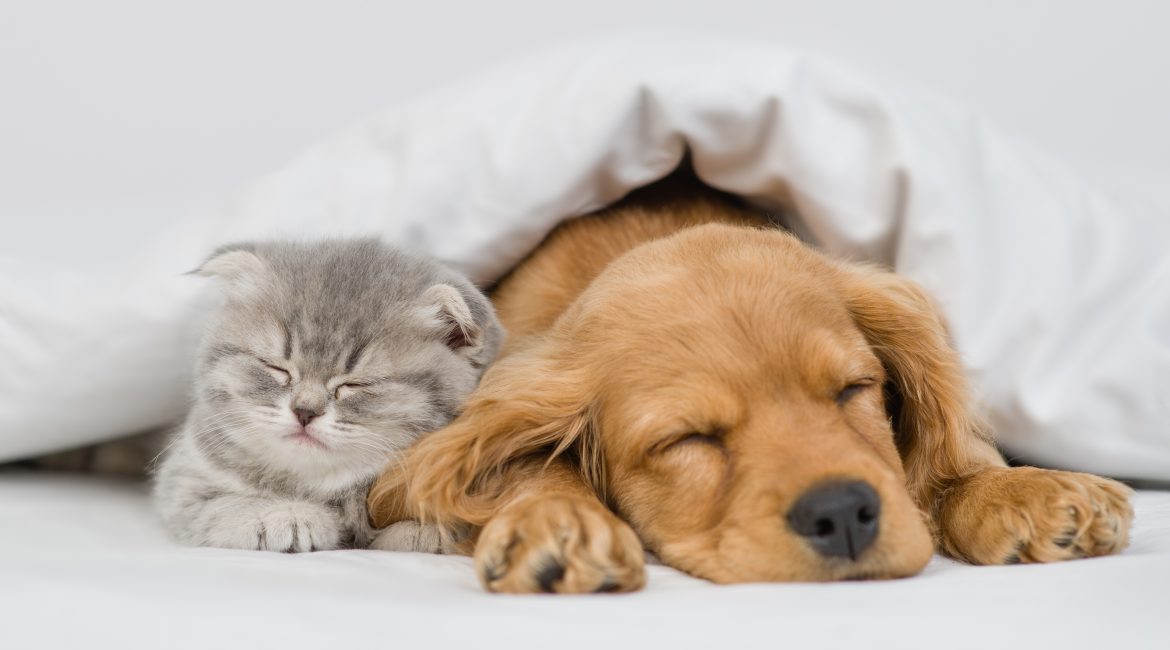The days are getting shorter and the mornings are getting crisper: it’s time to warm the place up and keep your pets toasty this winter season.
In South Africa, we are fortunate enough that our climates don’t tend to get too extreme but that doesn’t mean the winter nip doesn’t come sweeping through (here’s looking at you, Johannesburg), and if there’s one thing we know, it’s that cold weather and pets are a recipe for lots of blankets and snuggles!
It takes time for our immune systems to adjust to new seasons – just think of the winter sniffles that come knocking when winter rolls around. We have the option to heat our rooms at night and keep our feet and heads warm with thick socks and beanies. We also have the responsibility to make sure our furry friends are equally bundled up and safe from the cold!
At Oneplan, there is one thing we’re more passionate about than pet insurance and that happens to be our beloved animals. We hope that you can learn something today to keep your pets safe and snug.
What You Need to Know About Cold Weather and Pets
Pets can be quite affected by a change in temperature, so you need to keep an eye on any behavioural changes that relate to their energy levels and diet.
Some pet owners assume that because dogs come from a long line of wild wolves or because they have a shaggy coat that they can withstand all kinds of conditions. Whilst some dogs and cats have the disposition to function better in the cold than others, most pets will need their parents to help them keep warm.
Discover: How To Keep Your Furry Members of The Family Entertained While You Work From Home
An extra coat will help
Despite its warm and fuzzy appearance, fur isn’t as warm as you would think. Fur isn’t great for insulation or retaining heat, especially if your pet’s fur gets wet (this can end up being really dangerous in cold temperatures).
Short-haired dogs and cats are going to be more prone to feeling the cold and will need some assistance in the form of crazy-stupid-cute winter jackets and jerseys. This is all obviously dependent on the personality of your pet. If you can see your animal is in distress, get any tight or claustrophobia-inducing clothes off them and keep them warm with blankets and heaters instead.
You also need to remember not to leave your pet unsupervised in any winter gear. They run the risk of getting their jacket wet which could lead to hypothermia. There is also the chance of them getting caught or strangled on an object which is scary, so be vigilant!
Bring them inside
If it’s too cold for you to be outside, it’s too cold for your pet to be outside. Sure, some breeds are fanatical about the cold and will be happy to play in the chilly outdoors (huskies are a great example of this).
Some outdoor cats will be too tricky to keep indoors, in which case you just need to give them a warm spot to come to when they’re good and ready!
Make sure that your home is winterproof, too! Keep blankets and cuddly spots available and make sure to place any winter products like antifreeze out of reach as this can be fatal for cats and dogs.
Visit the vet
Now would be a great time to get your pet to the vet, especially if you already know your pet suffers from a chronic illness or has a compromised immune system. If your pet suffers from heart disease, diabetes, or arthritis then the colder months may be more challenging for them.
If you’re not already a part of our Oneplan Pet Family, we highly suggest taking a look at our range of affordable pet insurance plans that will greatly reduce the burden of these vet bills. The best part? We pay you BEFORE you see the vet via your Onecard – you can take a look at all our benefits for yourself by getting a quick & simple online quote.
Keep exercising but keep it short
It is important to keep your pet active in the winter – more so dogs than cats. You should still go for walks but keep the distances short to avoid your dog getting sick or even hypothermic.
Also, be aware of the time that you decide to go for a run or a walk. If it’s still dark outside in the morning it may be too cold for your dog. If you are running during early winter mornings with your dog, be sure to wear reflective gear in the dark!
Hypothermia Symptoms in Dogs and Cats
If your pet is left in the cold for too long, it can suffer a fatal drop in body temperature and suffer from hypothermia. These are the signs and symptoms your pet may be in shock and needs immediate care:
- Lethargy
- Muscle stiffness
- Violent shivering
- Listlessness
- Temperature below 36°C
- Problems breathing
- Lack of appetite
- Weak pulse
- Coma
- Cardiac arrest
We know that our team is looking forward to the frosty winter snuggles with their beloved pets, and we hope you are, too. Look after yourself and your four-legged besties this winter.
Read this next: 5 Tips for Keeping Pets Warm in Winter
Your Pet Insurance Family,
Oneplan




